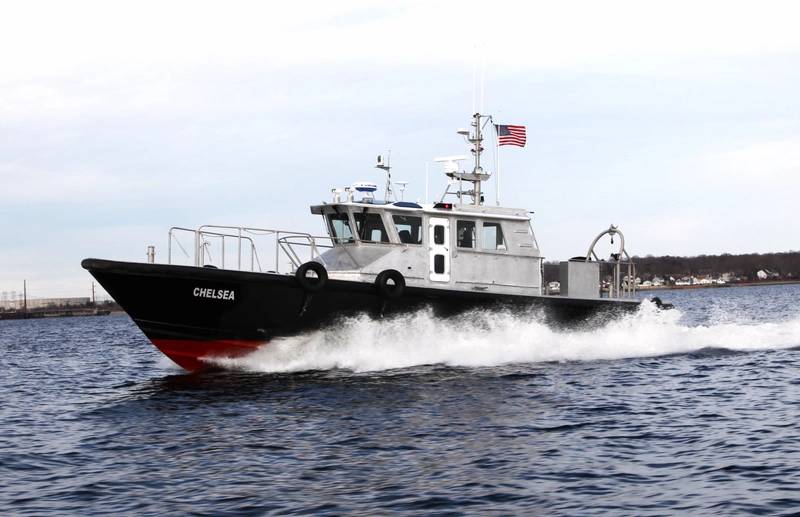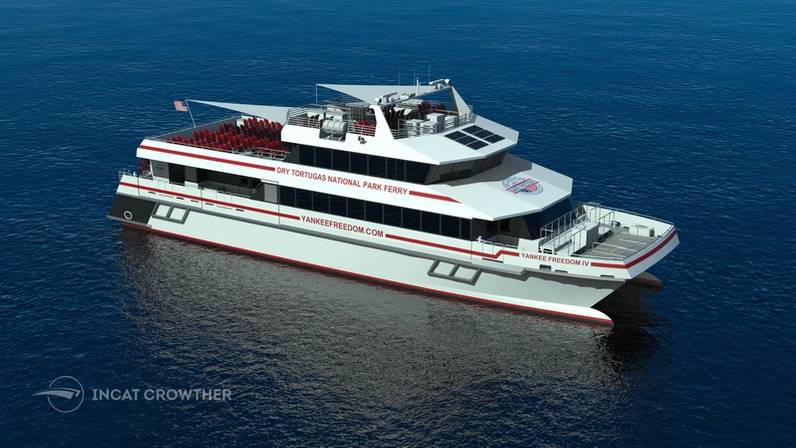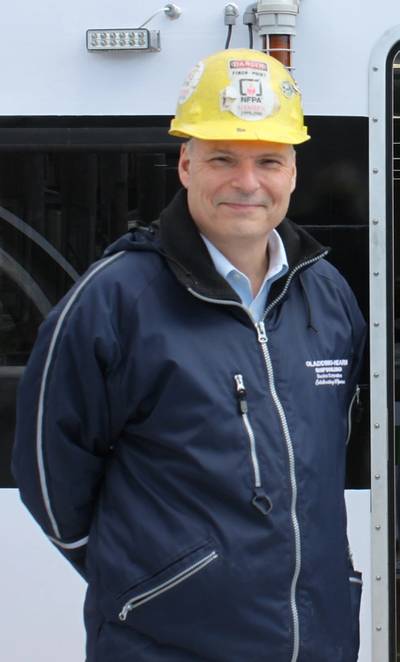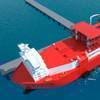Insights: Peter Duclos, Co-president, Gladding-Hearn Shipbuilding, Duclos Corporation
To start, will you please share your personal journey in the shipbuilding industry and what led you to your current role?
Gladding-Hearn Shipbuilding Inc. was started by Preston Gladding and Richard Hearn in mid-1955. My father, George Duclos, joined them as a minority partner in late 1955, and for $900 owned 20% of the company. Fast forward to 1984, my parents bought out the Gladding and Hearn families and formed Duclos Corporation. Gladding-Hearn was kept as a d/b/a trade name. My brother John joined the company in 1984 with a naval architecture degree from University of Michigan. I joined the company in 1987 with a mechanical engineering degree from UMass. Our sister Carol joined the company in 1999 with a MS degree in finance from Boston College. Although we each officially joined the company at different times, we all grew up immersed in the shipyard. Our Dad was very fond of saying, “We had shipyard for dinner every night.”
Since 2000, the business has largely been run by John, Carol and me, and in 2010, the assets were officially transferred from my parents. We all worked at the company at various times as teenagers, including cleaning the office after hours. Between the three of us, we have done every job in the company. The transition from our parents running the company to our generation was a natural progression.
How would you describe your leadership philosophy?
We are all very much hands on and team-oriented. It’s a small family business, so we need to have a full understanding of everything that goes on. The three of us have our areas of responsibility, but we work together as a team. We are involved from the initial customer contact, through design, project management, construction, trials and delivery. If there is an issue with one of our boats, whether it’s a month old or 40 years old, John or I will usually get the first call and manage it from there.
Will you please give an overview of recently completed, active and upcoming projects, including both newbuild and repair?
We try to maintain a good mix of new construction and refit/repair work. We’ve been able to do this in the past three years. On the new build side, we are fortunate to have several pilot boats to build ranging in size from 40 to 70 feet for repeat customers. We also have a 35-meter catamaran ferry starting soon. We recently delivered our first crew transfer vessel (CTV) to the offshore wind market. On the refit side, we did a major overhaul on a 38-year-old steel ferry and two 19-year-old pilot boats.
 Gladding-Hearn earlier this year delivered the first of two Chesapeake-class pilot boats undergoing a comprehensive refit for the Boston Pilots. (Photo: Gladding-Hearn Shipbuilding, Duclos Corporation)
Gladding-Hearn earlier this year delivered the first of two Chesapeake-class pilot boats undergoing a comprehensive refit for the Boston Pilots. (Photo: Gladding-Hearn Shipbuilding, Duclos Corporation)
Gladding-Hearn is known for its expertise in pilot boat, passenger vessel and now CTV construction. How did the company become a leader in these sectors? What are the hallmarks of a Gladding-Hearn-built vessel?
Regardless of the type of boat we are building, I think it comes down to good design, service and execution, and in each case looking after our customers’ best interest.
A big part of our success is that we have long-term partnerships with designers Ray Hunt Design for our pilot boats and Incat Crowther for ferries. We have a full in-house engineering and naval architecture staff, but it’s invaluable to bring in the expertise of both of these design firms. And it’s also invaluable to have done so many projects together. This long-term relationship has allowed us to develop standard designs that can be customized for different customer requirements. Building small “custom” commercial vessels is very difficult. The expectation is that it will be perfect, and we only get one shot at it. This is not mass production like automobiles or airplanes where they build prototypes prior to production. We have to look for every opportunity to create flexible, standardize design details that we can use in many applications. Using standard design details, materials and components gives us confidence in performance, reliability, cost, weight, etc. In custom boat building there is always a balance between giving the customer what they want, developing new ideas/products and using tried and true details you can rely on.
As far as CTVs go, I would not say we or any other builder at this point is a clear leader. It’s such a new market. We’ve only delivered one CTV; and while we are confident it will prove itself in time, it’s still early days.
What are the biggest challenges currently facing Gladding-Hearn (or the U.S. shipbuilding industry in general), and how is your company addressing them?
The past four years have been extremely challenging. We successfully managed our way through COVID, when we were hit by inflation of material, labor and overhead costs. We are able to mitigate some of the effects of inflation because we have flexible, standardized design details. We also have a talented workforce.
Inflation has been real challenge. Consider that we are just now finishing boats that we priced two years ago. We are able to mitigate some of the effects of inflation because we have flexible, standardized design details. We order the major equipment much earlier in a project than before and we need to consider the cost of shipping when making purchases much more than ever before.
In addition, like many businesses, we have not been able to grow our workforce as quickly as we would like. The learning curve for custom boat building is steep, so we continue to develop in-house training for our newer workers.
We have both short- and long-term solutions that aim to address workforce gaps. In the short term, we have used subcontractor labor companies to provide skilled trades people. In the long term, we are more aggressively reaching out to local trade schools, attending local job fairs etc. Trade schools are over-capacity in Massachusetts, but I am encouraged to see our state is investing to expand many of them across the Commonwealth. We created a dedicated welder training and testing center, and have a full-time certified welding trainer. We have also used other outside organizations for training and certification in other trades such as electrical and painting. With the help of a state of Massachusetts grant and a local community college, we’ve also invested in companywide workforce development. We have found that repair and refit work are also excellent training tools for new employees. Seeing the finished product before you have to create it from scratch is a great way to learn.
How has the shipbuilding industry changed since you first entered the business? And what has remained the same?
What hasn’t changed is that Gladding-Hearn continues to build high performance, reliable commercial vessels. What has changed dramatically is the communication process to get to the end result. When I started in the business, the fax machine was a new invention. There were no cell phones, we didn’t have email or the internet. We mailed or faxed letters, spoke on the phone and we got the job done. Today the capacity to communicate has increased thousands of times, especially in the past four years. Before 2020, we did not use Zoom or Teams. Today we may have two or three remote meetings a day without having to travel. We are never really out of the office when we can communicate by phone, email, text or Teams. We have access to our server remotely to look at drawings, send and receive photos, research something on the internet, etc. It has really enhanced our customer service response.
Despite advances in technology in all aspects of the marine industry, custom boat building continues to require skilled people to complete the project. We are always looking for ways to improve efficiency with technology, but the actual production takes people. Therefore, one of our main focuses is on training our employees and making sure we have a safe workplace.
Regulatory oversight has become a much bigger part of every aspect of the business in the past 30 years. While the oversight adds a significant cost to running a business, much of the oversight has had positive impacts, especially regarding safety and environmental issues.
Another big change is the addition of a dedicated Quality Control department. This small, but mighty department has helped us improve our construction standards and the quality of our end product.
 Gladding-Hearn is building a new 300-passenger, high-speed catamaran for Key West, Fla.-based Yankee Freedom, for passenger service between Key West and the Dry Tortugas National Park. (Image: Incat Crowther)
Gladding-Hearn is building a new 300-passenger, high-speed catamaran for Key West, Fla.-based Yankee Freedom, for passenger service between Key West and the Dry Tortugas National Park. (Image: Incat Crowther)
How is Gladding-Hearn investing—in people, facilities, etc.—to ensure future success?
We are always looking for opportunities to provide training and advancement opportunities for our employees as discussed above. We have made some recent investments in facilities. In 2020, we purchased a new plasma cutting machine. We have done plasma cutting in-house since 1998. The new plasma cutter provides more accuracy and has the ability to mark the plate. With the help of a MARAD small shipyard grant, we just replaced some inefficient bi-fold doors with sliding hanger type doors on one of our large fabrication buildings. We purchased a self-propelled yard transporter for small to mid-sized vessels. We also just completed a covered plate storge yard, so we can store plate out of the weather. All three investments will allow us to utilize our limited climate controlled internal space and our railway more efficiently.
What is your vision for Gladding-Hearn Shipbuilding in the next 5 to 10 years?
I don’t see further expansion in the near future, rather continually improving our current operation. The new-build passenger vessel market has been very slow, but I am encouraged by recent enquires that this is changing. I also think we will continue to see companies opting for major overhauls and repowers given the increasing cost of new builds.















